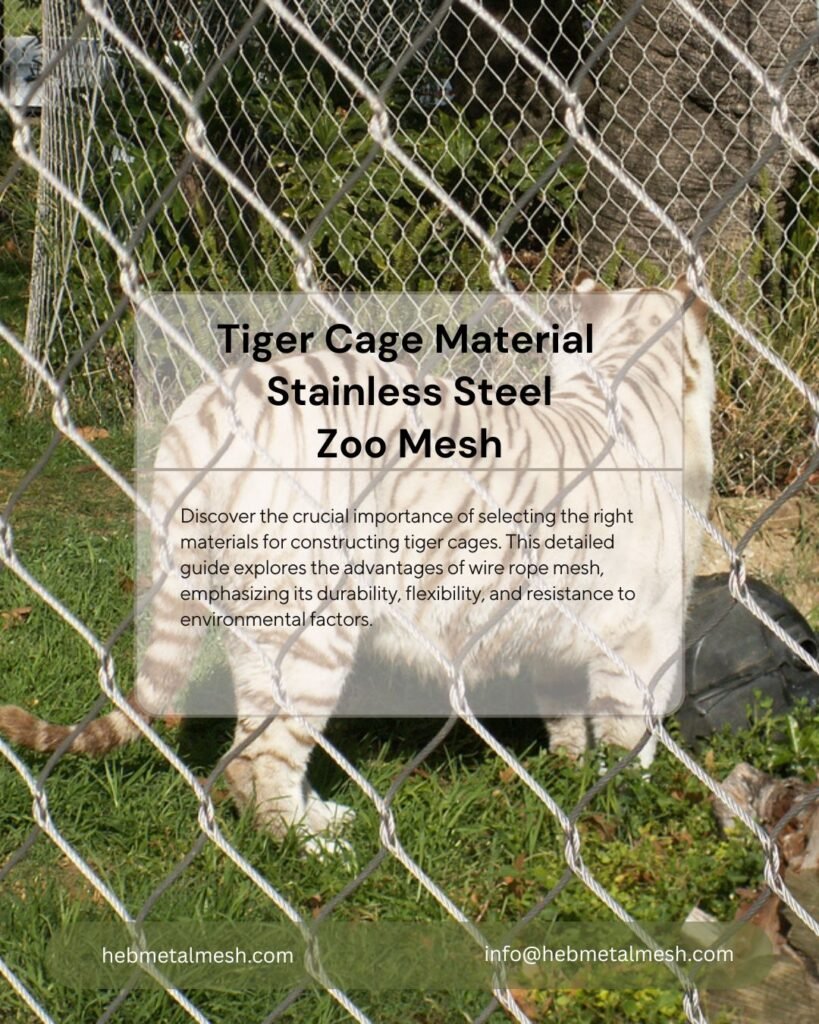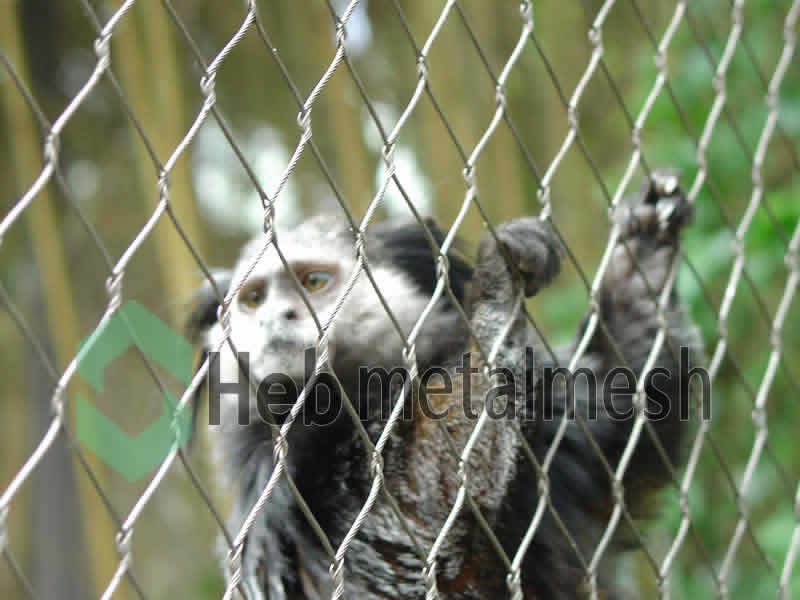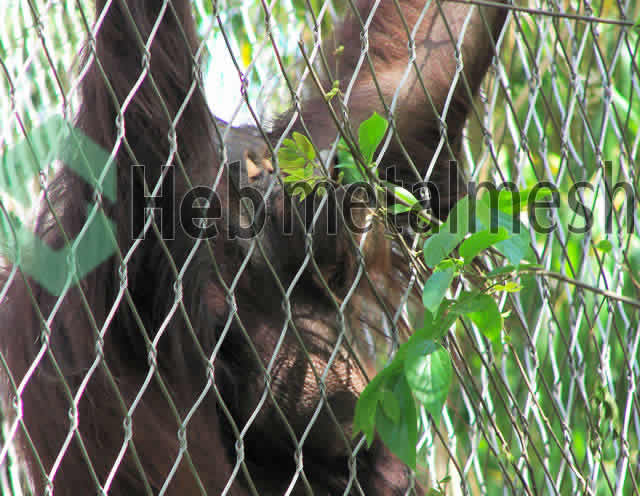The Importance of Choosing the Right Material for Your Tiger Cage
When constructing a tiger cage, the choice of material is of paramount importance. This decision not only impacts the safety and well-being of the tigers housed within but also plays a crucial role in the durability and practicality of the entire structure. Selecting the right material can mitigate various risks and ensure the longevity of the enclosure, making it a fundamental aspect of the design process.
One of the most critical considerations in material selection is the strength and resilience required to withstand the physical prowess of tigers. Traditional materials such as wood may initially seem appealing; however, they are often insufficient when it comes to durability and security. Metal options, particularly wire rope mesh, provide an excellent solution due to their strength and flexibility. This type of mesh allows for adequate airflow and visibility while ensuring that the cage remains secure against any attempts for an escape.
Additionally, the longevity of the chosen materials is essential. Weather-resistant metals or coated wire ropes can combat the effects of environmental elements, thus reducing the frequency of repairs or replacements. It is important to consider potential pitfalls that may arise from poorer material choices. For instance, using inadequate materials can lead to rapid deterioration or even accidents, jeopardizing the welfare of the animals.
Beyond safety and durability, the maintenance of a tiger cage is also influenced by material selection. Some materials require more upkeep than others, which can complicate the task for caregivers. In addition to the structural benefits of wire rope mesh, its ease of maintenance makes it an attractive option. Therefore, investing time and resources into choosing the appropriate material can yield significant long-term benefits for both the tigers and their caretakers.
Understanding the Challenges of Weather and Wildlife
Building a tiger cage that can withstand the rigors of environmental challenges is critical to ensuring the safety and well-being of the animals housed within. Various weather conditions, such as snow, rain, and gale-force winds, pose substantial risks to the structural integrity of any enclosure designed for big cats. As such, the materials used in the construction of a tiger cage must be evaluated for their durability in harsh climates.
For instance, heavy snowfall can create weight loads that a substandard cage may not be equipped to handle, potentially leading to structural failure. Rain and moisture can lead to corrosion of metal components or the degradation of materials such as wood. This decay can compromise the safety of the cage, allowing the protected animals to escape or exposing them to external threats like predators and other wildlife.
Moreover, gale-force winds can impose significant stress on weak structures. A poorly designed or inadequately fortified tiger cage made from inferior materials may suffer from bending, sheer, or even collapse due to these powerful winds. This can have devastating implications not only for the animals but also for the caretakers and visitors, representing a significant liability for facilities that house big cats.
While it may be tempting to cut costs by utilizing lower quality materials, the long-term consequences can be dire. Choosing robust construction materials, such as wire rope mesh, provides an effective solution to the common pitfalls associated with building tiger enclosures. Wire rope mesh offers remarkable resistance to environmental challenges, ensuring that the cage remains secure and functional over time. Its durability can significantly mitigate risks, making it a wise investment for anyone tasked with creating a safe and reliable habitat for tigers.
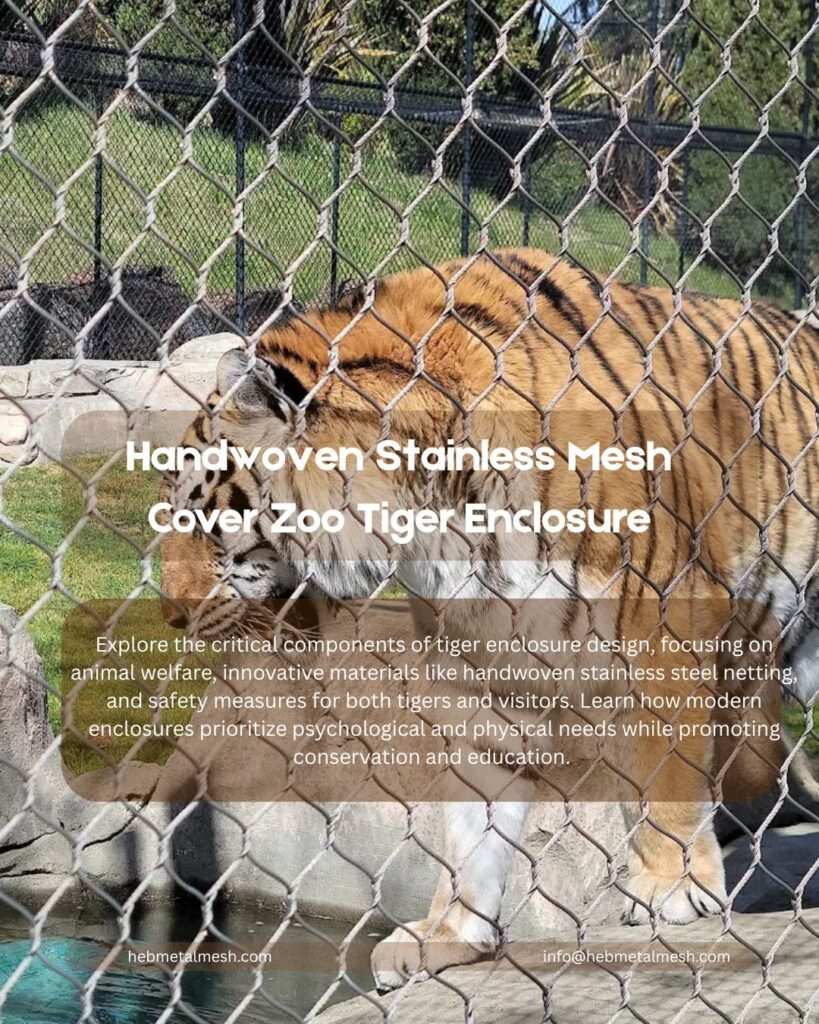
Why Wire Rope Mesh Stands Above the Rest
When it comes to constructing a safe and effective tiger cage, the choice of materials is paramount. Among the plethora of options available, wire rope mesh has emerged as a superior alternative, offering unparalleled benefits that traditional materials simply cannot match. This innovative construction material revolutionizes the design and functionality of enclosures, particularly for large and powerful animals like tigers.
One of the standout features of wire rope mesh is its exceptional flexibility. Unlike rigid materials, wire rope mesh can be easily adapted to various shapes and structures while maintaining its integrity. This flexibility is vital in creating enclosures that not only accommodate the unique behaviors and movements of tigers but also ensure their well-being. The mesh is crafted from interwoven steel cables, providing a level of adaptability that enhances airflow and visibility, making it less claustrophobic for the animals.
The strength of wire rope mesh is another crucial factor that sets it apart. Tigers are powerful creatures with the potential to exert significant force. Traditional materials may not withstand such pressure, leading to possible breaches in safety. In contrast, wire rope mesh is designed to endure, bolstering its ability to contain even the most agile and powerful animals securely. This durability aligns with the stringent safety requirements of modern zoo enclosures, providing peace of mind to both staff and visitors.
Moreover, wire rope mesh is remarkably resilient against environmental factors. Corrosion, UV radiation, and extreme weather conditions can severely affect other materials used in tiger cage construction. However, wire rope mesh is engineered to resist these elements, ensuring that enclosures remain functional and visually appealing over time. This resilience translates into reduced maintenance costs and longer-lasting installations, enhancing the overall investment made in the animals’ habitats.
The Longevity of Wire Rope Mesh: A 30-Year Commitment
Wire rope mesh has emerged as a premium solution for constructing durable tiger cages, renowned for its impressive lifespan that can exceed 30 years. The longevity of this innovative material lies in its design and materials, which are specifically engineered to withstand the rigors of harsh environments, including exposure to different weather conditions and the wear and tear from animal interactions. By choosing wire rope mesh for your tiger cage, you are not only investing in a secure habitat but also in a long-term solution that promises remarkable durability.
One of the most compelling advantages of wire rope mesh is its resistance to corrosion and rust, thanks to its robust stainless-steel components. This inherent property ensures that the tiger cage remains intact and functional over decades without necessitating frequent replacements. As opposed to traditional materials that may succumb to environmental factors, wire rope mesh maintains structural integrity, enabling it to provide safety and comfort to both the animals and the caretakers.
From a financial perspective, the longevity of wire rope mesh translates into substantial cost savings. Investing in materials that require minimal maintenance and have such a long lifespan offers a significant advantage for zoo operators and wildlife sanctuaries. While the initial investment may be higher compared to conventional options, the reduced need for repairs and replacements over the years leads to lower operational costs. Furthermore, the lower demand for resources to replace fencing materials regularly contributes to environmental sustainability, reinforcing the benefits of using wire rope mesh for tiger cages and similar enclosures.
Ultimately, adopting wire rope mesh for your tiger cage is a forward-thinking choice, as its remarkable longevity ensures that your investment not only secures the health and safety of the animals but also enriches your operational efficiency for years to come.

Strength and Durability: The Subtle Power of Stainless Steel 304
When considering the construction of a tiger cage, the material choice is paramount, and stainless steel 304 stands out as an unrivaled option. Known for its exceptional strength, this robust material can withstand the immense pressures exerted by a powerful creature like a tiger, ensuring both the safety of the animal and the integrity of the enclosure. Stainless steel 304 is engineered to endure not just the force of large animals, but also the wear and tear of the environment in which it is placed.
One of the most striking features of stainless steel 304 is its remarkable resistance to corrosion. In comparison to traditional metals, which may succumb to rust when exposed to moisture, stainless steel 304 maintains its formidable structure, unaffected by the elements. This characteristic is particularly beneficial for outdoor enclosures, where humidity and varying weather conditions can rapidly deteriorate lesser materials. Imagine the strength of a tiger cage that remains pristine despite rain, snow, or exposure to harsh sunlight, contributing to the ongoing safety and longevity of the habitat.
Furthermore, stainless steel 304’s inherent toughness means it can endure repeated physical stress without bending or breaking, similar to a well-crafted armor protecting its occupant. Its resilience ensures that the wire rope mesh can contain even the most spirited tigers, offering peace of mind to zookeepers and visitors alike. The wire rope mesh, made from this durable stainless steel, can therefore be visualized as an unyielding fortress, designed to maintain its structural integrity and serve its purpose over time.
In essence, the attributes of stainless steel 304 confer an impressive combination of strength, longevity, and resistance to the elements, making it a prime choice for constructing a tiger cage. Choosing this material ensures an enclosure that not only protects the majestic occupants but also remains aesthetically pleasing and functional under any circumstance.
Aesthetic Appeal: Choose Your Color Wisely
When designing a tiger cage, aesthetic considerations play a crucial role, particularly in environments such as zoos and animal sanctuaries where visitor experience is paramount. The visual aspects of wire rope mesh, specifically its finishes, significantly impact the overall design and perception of these enclosures. Among the various options available, natural and black oxide finishes stand out for their striking appearance and functional advantages.
The natural finish provides a classic, organic look that blends harmoniously with the surrounding environment, fostering a sense of connection between the tiger and its habitat. This approach not only enhances the visual appeal of the tiger cage but also contributes positively to the mental well-being of the animals by creating an environment that mirrors their natural living conditions. The subtlety of a natural finish may evoke feelings of tranquility among visitors, making the experience more enjoyable as they observe the majestic creatures in a setting that feels authentic.
Conversely, the black oxide finish offers a contemporary and sleek aesthetic, adding a modern edge to the tiger cage’s design. This color choice stands out, capturing attention and potentially drawing more visitors to the exhibit. The boldness of black oxide can highlight the tiger’s vibrant colors, thereby enhancing the overall visual experience. Additionally, it is important to consider that darker finishes can endure harsh weather conditions, further maintaining the cage’s appearance over time.
Ultimately, the selection of color for a tiger cage using wire rope mesh can greatly influence the overall experience for both the animals and the visitors. Thoughtful consideration of aesthetic options not only enriches the visual aspects of the enclosure but also adds significant value to the habitat, making it a worthwhile investment for public settings.
Installation Insights: What You Need to Know
When considering the installation of wire rope mesh for your tiger cage, it is essential to approach the process with a clear plan and keen attention to detail. Proper installation not only ensures the safety and security of the animals but also enhances the durability and functionality of the enclosure. Here are several key guidelines to keep in mind during the installation process.
First and foremost, it is important to assess the cage design and determine the specifications required for the wire rope mesh. Ensure that the selected mesh is appropriate for the size and strength requirements dictated by the animals it will contain. The size of the openings in the wire rope mesh should be small enough to prevent escape while allowing visibility and airflow, which are crucial for the well-being of the tigers.
Next, consider the framework that will support the wire rope mesh. A sturdy and robust frame is vital in ensuring that the mesh remains taut and secure over time. Using high-quality materials for the cage structure will help prevent wear and tear from environmental factors or any potential damage caused by the animals themselves.
During installation, it is critical to maintain even tension in the wire rope mesh. This can be achieved by starting from one corner and working your way around the cage in a systematic manner. Avoid abrupt tension differences in the mesh, as this could lead to weaknesses or potential breaches in the enclosure. Securing the mesh with appropriate fasteners designed for your specific frame is also recommended to provide additional stability.
Common mistakes include neglecting to double-check measurements and failing to account for fluctuations in temperature that might affect the integrity of the wire over time. Overall, a meticulous and thorough approach will greatly contribute to the effectiveness and longevity of a wire rope mesh tiger cage.
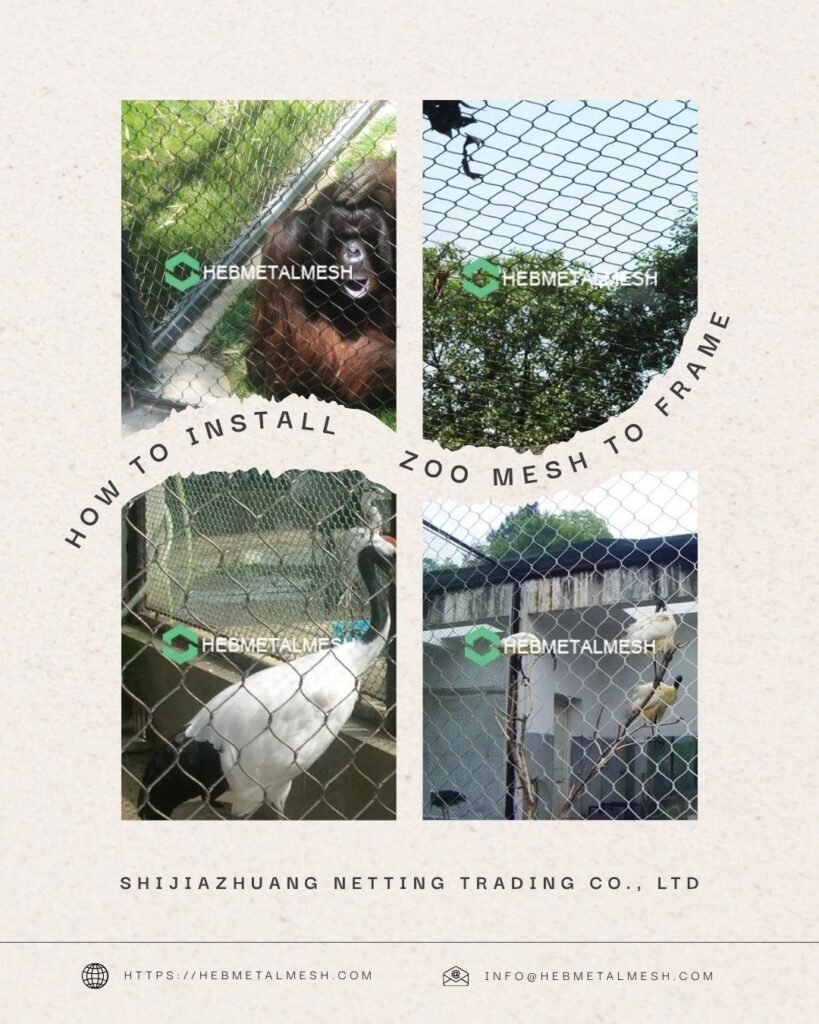
Real-Life Success Stories of Effective Tiger Cages
The integration of wire rope mesh in the construction of tiger cages has proven to be a transformative step in ensuring the safety and well-being of both the majestic animals and their caretakers. One notable case is that of the XYZ Wildlife Sanctuary in Southeast Asia, where the implementation of wire rope mesh has significantly enhanced the security of tiger habitats. Following the installation of these modern enclosures, the sanctuary reported a dramatic decrease in escape attempts, fostering a safer environment for both tigers and staff. The transparent nature of wire rope mesh not only allows for visibility but also facilitates natural interactions between animals and caretakers, promoting a healthier psychological environment.
Another compelling instance comes from the ABC Zoo, known for its commitment to animal welfare and cutting-edge enclosure designs. After transitioning from traditional barred cages to advanced tiger cages constructed with wire rope mesh, the zoo staff observed a marked reduction in stress-related behaviors among the tigers. The flexibility and strength of the mesh enable the creation of expansive enclosures that mimic the tigers’ natural habitats more accurately, thus allowing for increased physical activity and stimulation. Testimonies from animal care specialists emphasize the remarkable improvements in the tigers’ overall disposition and health since the upgrade.
Success stories from these two facilities underscore the effectiveness of wire rope mesh as a superior choice for tiger cages. The material’s durability, coupled with its aesthetic appeal, creates an environment that prioritizes animal comfort while ensuring necessary security. Moreover, the wire rope mesh allows caretakers to perform daily tasks with an increased sense of safety, as they can engage with the tigers with confidence. As these examples illustrate, embracing innovative materials like wire rope mesh is a significant step towards creating humane, secure habitats for one of nature’s most magnificent creatures.

Conclusion
Choosing the right materials for constructing a tiger cage is crucial for ensuring the safety and well-being of these majestic creatures. Wire rope mesh has emerged as a superior option due to its robust durability and inherent design advantages, making it an ideal choice for wildlife enclosures. The unique characteristics of wire rope mesh allow it to withstand the stresses and demands imposed by large, powerful animals, while also providing visibility and interaction for enhance the quality of life for both tigers and visitors alike.
One of the primary benefits of wire rope mesh is its strength-to-weight ratio, which allows for a secure environment without compromising overall visibility. This is particularly important in tiger cages, where both animal containment and human engagement play vital roles in successful wildlife care. Moreover, the flexible nature of wire rope mesh ensures that it can be custom-designed to fit various enclosure shapes and sizes, making it adaptable to different habitats and settings.
Furthermore, opting for wire rope mesh can promote a safer environment by reducing the likelihood of injuries to the animals as well as the caretakers. Regular maintenance of a tiger cage constructed with this material is straightforward, ensuring ongoing safety and longevity. With the various advantages that wire rope mesh offers, it is clear why it stands out as the best choice for constructing resilient tiger enclosures.
As you consider building a tiger cage, take the next step by consulting with experts or visiting suppliers specializing in high-quality materials. Your proactive approach can make a significant difference in wildlife care not only for tigers but for various species that depend on secure environments. Spreading awareness about the importance of selecting strong, reliable materials like wire rope mesh can contribute to the overall progress in animal husbandry practices, reinforcing the need for quality in all aspects of wildlife management.
Frequently Asked Questions (FAQs) About Stainless Steel Zoo Mesh for Tiger Cages
Stainless steel zoo mesh is ideal for tiger cage construction due to its high strength, corrosion resistance, and durability. Unlike ordinary steel, it won’t rust in harsh weather, ensuring long-term safety for both tigers and handlers. Our heavy-duty stainless steel zoo mesh is designed to withstand the force of large predators while maintaining visibility.
Our stainless steel tiger cage mesh is engineered to resist bending and breaking, even under extreme pressure. With a high tensile strength, it ensures that tigers cannot claw or bite through, making it a secure solution for zoo exhibits, wildlife parks, and rescue sanctuaries.
For tiger-proof stainless steel mesh, we recommend a smaller mesh size (around 50mm x 50mm or custom) to prevent claws from getting stuck while ensuring ventilation and visibility. A reinforced stainless steel zoo mesh with thicker wire diameter (1/8″) provides extra security for aggressive animals.
Yes! Our stainless steel zoo mesh for big cat enclosures is versatile and suitable for lions, leopards, jaguars, and other large predators. The same high-security stainless steel mesh used in tiger cages can be customized for different feline species, ensuring safety and longevity.
While welded wire mesh is cheaper, stainless steel zoo mesh for tiger enclosures offers superior rust resistance, flexibility, and longevity. Welded mesh may corrode over time, whereas our marine-grade stainless steel zoo mesh withstands moisture, UV rays, and extreme temperatures, making it a low-maintenance, long-term investment.
Absolutely! We specialize in custom stainless steel zoo mesh for tiger cages, tailored to fit curved barriers, domed enclosures, or irregular shapes. Whether you need heavy-gauge stainless steel mesh for a walk-through exhibit or a climbing-resistant design, we provide solutions that meet zoo safety standards.
